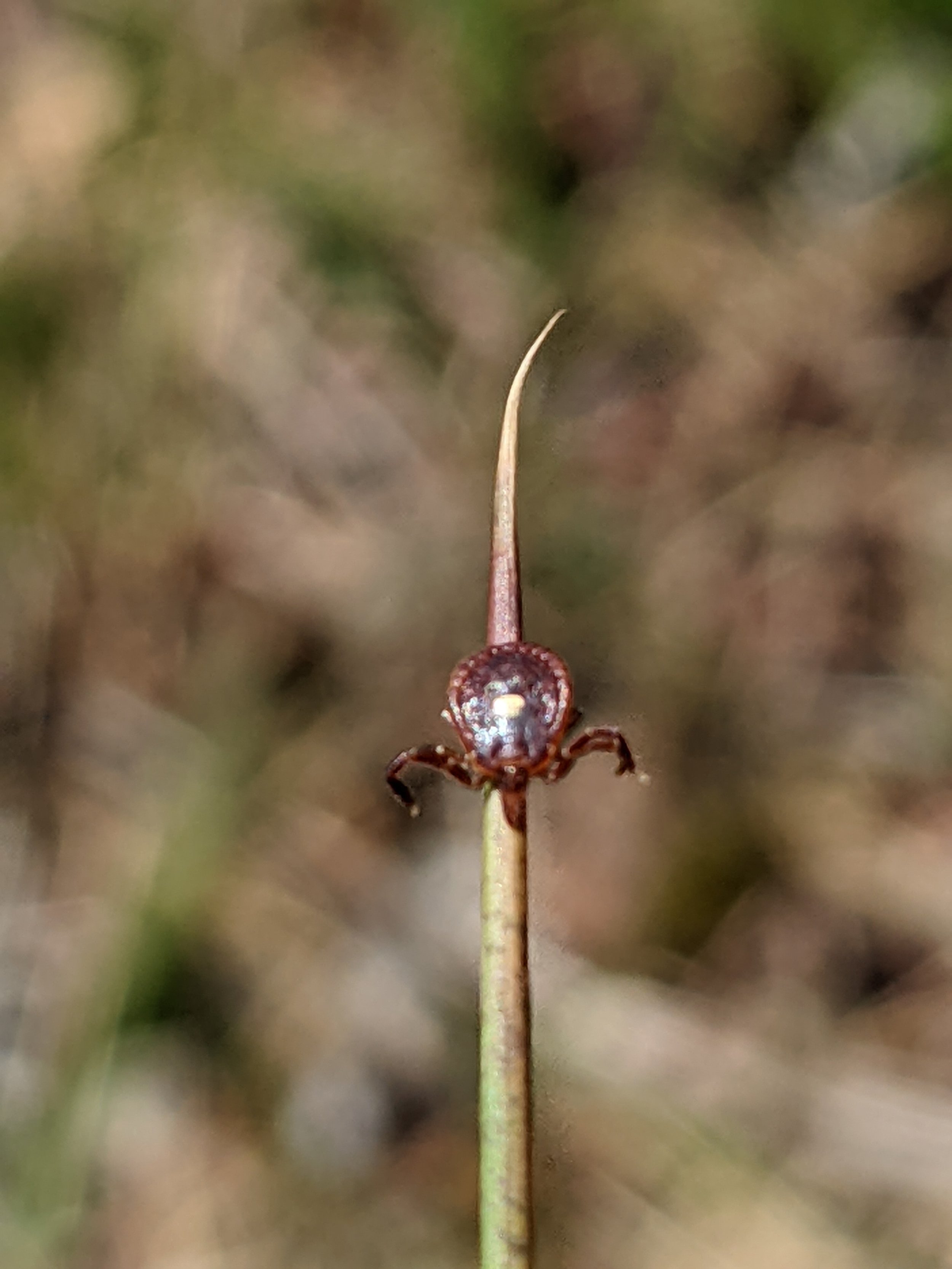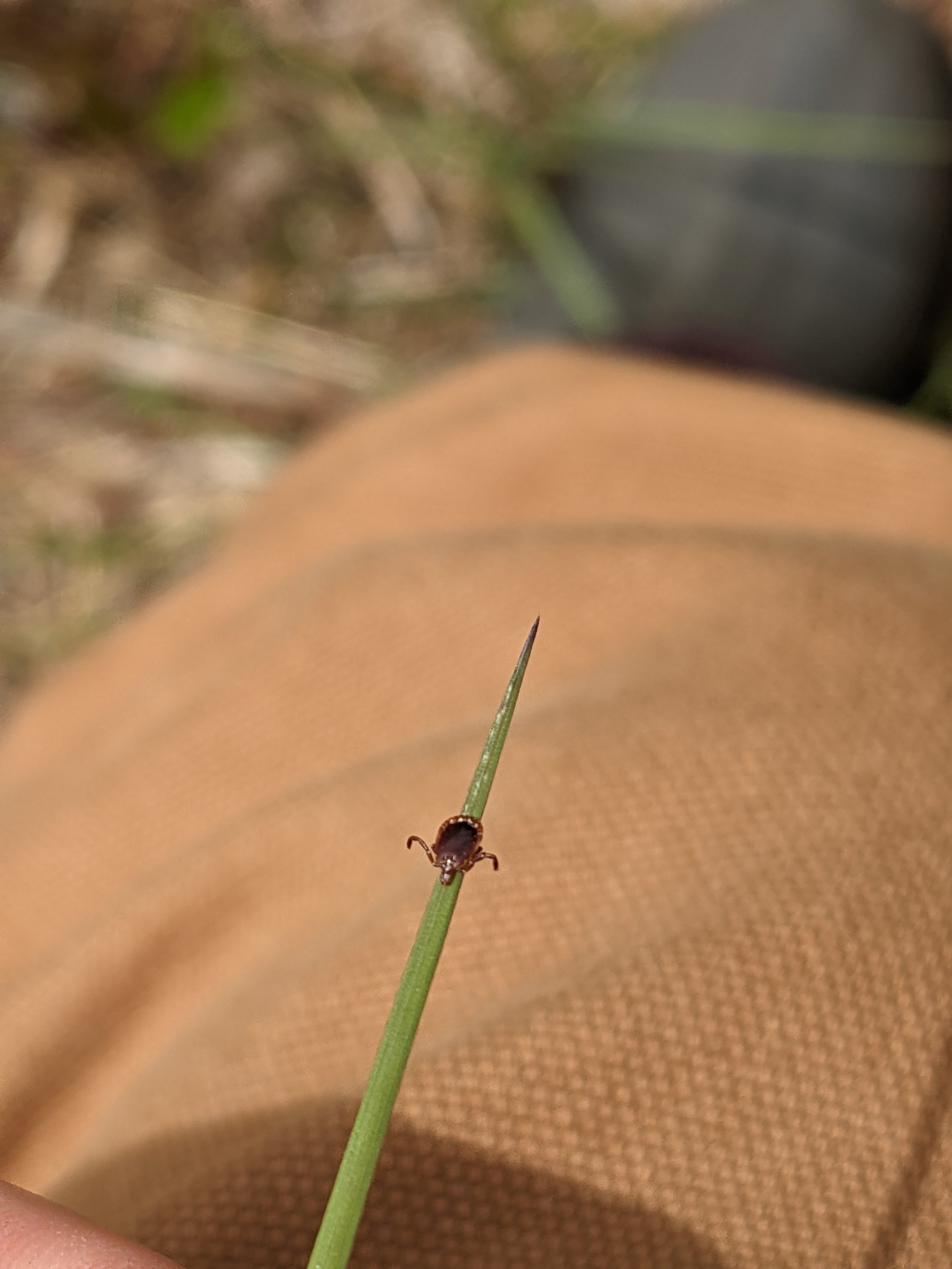Cluster of 300+ lone star larvae collected on lint roller tape with dime for reference.
Lone Star Tick
Lone star ticks are found all across Martha’s Vineyard
They are also found on Nantucket, but in smaller abundances on the western part of the island. Lone star ticks are very abundant on Tuckernuck Island.
Lone stars can transmit Ehrlichiosis, Southern tick-associated rash illness (STARI), and Tularemia. They are the main cause of Alpha-gal Syndrome in the U.S.
On Martha’s Vineyard lone star ticks are active March-October.
Adults and nymphs, which can transmit disease and alpha-gal syndrome, are primarily active April-August
Larvae are not known to transmit diseases, but can trigger sensitivity to Alpha-gal. They are found in clusters known as a “tick bomb” with 50-500+ individuals causing irritating bites. Larvae are active in late summer and fall months primarily August - October
Lone stars can be found in a variety of habitats ranging from open grassy areas to dense forest with leaf litter. Lonestar nymphs and larvae have been collected by drag sampling in mowed lawns less than 5 inches in length
Lone stars are relatively fast ticks when compared to deer ticks, and are aggressive biters. Using repellents such as permethrin and long-sleeved clothing that is tucked in is of upmost importance to prevent bites










